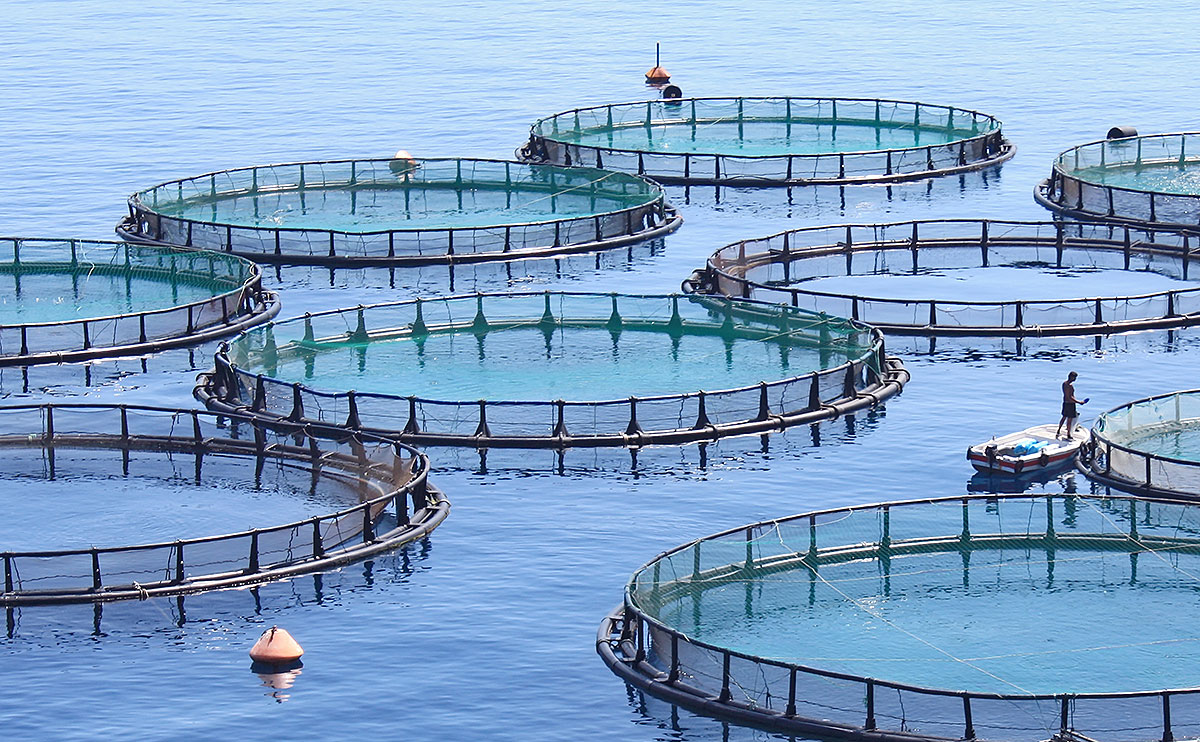If I found myself stranded on a desert island, I’d have the assurance of an unlimited source of the healthiest food I could imagine: Omega-3 fatty acids and high quality protein from wild caught fish. Add a few tropical fruits and I could probably live a long and healthy life on my desert island.
Of course, if I am lucky enough to find myself far away from the “civilized world,” I improve my chances of finding fish free of toxins.
Fish may just be the stuff of life. Its healthy fats are essential to optimal cardiovascular function, joint health, brain function and blood sugar metabolism, just to mention a few of its multitude of benefits.
Sadly, most of the fish available on North American markets comes from fish farms which are little more than cesspools of toxic sludge that not only pollute our waterways, but pollute our bodies when we consume them.
They’re completely unsustainable as well Salmon are carnivorous, so it takes 2.2 pounds of wild fish to produce one pound of farmed salmon. Fish farming is rapidly depleting wild fish populations.
Fish farms produce about one-third of the world’s seafood, most notably nearly all the catfish and trout and half of the shrimp and salmon so important to human nutrition.
It’s cheap: Farmed salmon can be $4 to $5 a pound cheaper than wild-caught salmon, but the price is too high in terms of our health and to the health of our environment and wild fish populations.
Toxic mash
In a landmark 2002 study, Canadian researchers found that a single serving of farmed salmon contains three to six times the World Health Organization’s daily intake limit for dioxin and PCBs.
PCBs (polychlorinated biphenyls), chemicals once used in the manufacture of electrical and heating equipment, paints, plastics, rubbers, dyes and many other substances, were banned in 1977 after the U.S. Environmental Protection Agency called them “probable human carcinogens.”
However, PCBs are still present in water, soil, aid and food supplies.
In its Dec. 26, 2005 issue, U.S. News and World Report reported that farmed salmon are raised on fish pellets derived from local fish that often contaminated with PCBs.
The study in the November 2005 issue of the Journal of Nutrition reports that contaminant levels in farmed salmon from certain regions increase the risk of cancer enough to outweigh benefits.
The study showed that farmed salmon from South America, specifically Chile, had the lowest level of pollutants, followed by those form North America. Europe had the highest level, according to David Carpenter, co-author of the study and director of the Institute for Health and the Environment at the University at Albany’s School of Public Health. Pacific wild salmon also has some contaminants from the natural environment, specifically mercury, but these are at a low enough level that the benefits outweigh the risks.
Mercury can be a big problem with farmed fish. Purdue University nutritionists found that eating as little as one fish sandwich from farmed fish weekly could give a 60-kg. adult a 40% of the safe maximum mercury exposure.
Fish farms are most often composed of huge net enclosures in the open sea. Disease is rampant in these crowded pens.
Large quantities of chemicals are used in aquaculture, including antibiotics, pesticides, hormones, anesthetics, vitamins, minerals and anti-parasitical substances most often dumped directly into the ocean waters.
Not only are these potentially toxic substances incorporated into the tissues of the farmed fish, tides and even simple wave action sweep these chemicals out of the nets and into the open seas.
The use of antibiotics is particularly hazardous to the health of human beings and fish since it promotes the spread of antibiotic resistance.
Farmers dose their captive fish with a potent anti-parasitic drug called ivermectin, to rid them of sea lice and known to kill some species of shrimp.
Damage to the environment
Within a few years after large scale fish farming operations began in Canada, shrimp fishermen began pulling up traps full of a deadly mixture of feces, excess antibiotic –laden fish feed and decayed salmon carcasses that had drifted out of the pens.
It’s estimated that one single pen of 200,000 fish produces as much fecal waste as a city of 25,000 people.
In British Columbia, many inlets are caged off for huge Atlantic salmon farms. Although fish farmers assure that they have contained these genetically modified fish with voracious appetites to encourage fast growth, an estimated 40,000 to 1 million have escaped.
Biologists have found Atlantis salmon from the farms in 77 British Columbian streams. When these super-fish get into the wild, they compete unfairly for food resources, causing an increased rate of starvation among wild fish,” wrote Bruce Barcott in a December 2001 article in Mother Jones magazine.
Yet business is booming for fish farmers. Stricter environmental regulations in Norway have pushed fish farming operators to the Western hemisphere. In early 2002, the Canadian government lifted its seven-year moratorium on expanding fish farms in British Columbia. By 2003, there were 85 fish farms in operation in British Columbia and 90 applications pending. The government has stated its intention to quadruple the province’s salmon production by 2013.
Part of the allure of fish farming is to reduce the pressure on the world’s oceans, but that may be wishful thinking. Fish farming is an inefficient means of producing protein. A Feb. 6, 2003 article in The Christian Science Monitor notes that raising carnivorous fish like salmon and shrimp may actually reduce the numbers of wild fish since it takes 2.2 pounds of ground-up fish to make a pound of farmed salmon.
Answer: Avoid most fish
Yet there seems to be a Gordian knot around fish consumption – and the very experts on whom we rely for the best possible information are sending us mixed messages about the best way to get the healthy fats fish provides.
The U.S. Food and Drug Administration sets much more lenient toxin levels than does its kissing cousin, the Environmental Protection Agency. Most experts recommend being even more conservative about toxin exposure and some advise avoiding fish altogether.
Despite nutritionists extolling the virtues of high fish consumption, the U.S. Food and Drug Administration strongly recommends limiting the amount of fish we eat. The health advisory issued in March 2004 does not distinguish between farm-raised and wild-caught fish.
Let’s face it: Nearly all fish contains some level of mercury.
The FDA recommends that all women who are pregnant, may become pregnant, nursing mothers and young children abstain completely from shark, swordfish, king mackerel and tilefish because of the high levels of mercury contamination that may be particularly harmful to unborn babies and the developing nervous system of young children.
The FDA advisory recommends weekly consumption of no more than 12 ounces of fish and shellfish lower in mercury, including shrimp, canned light tuna, salmon, pollock and catfish.
It also advises keeping up to date on local fish safety warnings and, if there is no advisory available, not to eat more than six ounces of local-caught fish weekly.
Yet many of us are still getting too much mercury—some of it due to the 40 tons of mercury released into the atmosphere annually by coal-fired power plants.
The U.S. Centers for Disease Control and Prevention released a study in November 2005 that showed fully six percent of U.S. women of childbearing age had mercury levels above the levels that could put them at risk for nervous system defects.
Natural health advocate Joseph Mercola, D.O., says several more fish should be added to the list of fish to avoid, including tuna steaks, sea bass, oysters from the Gulf of Mexico, marlin, halibut, pike, walleye, white croaker and largemouth bass and urges the FDA to expand the list of fish to be avoided and those acceptable for limited consumption.
“I now warn my patients against consuming any fish, whether farm-raised or naturally-caught: fish of all varieties from any waters are now showing dangerously high levels of the tasteless, but highly toxic metal, mercury,” says Mercola.







